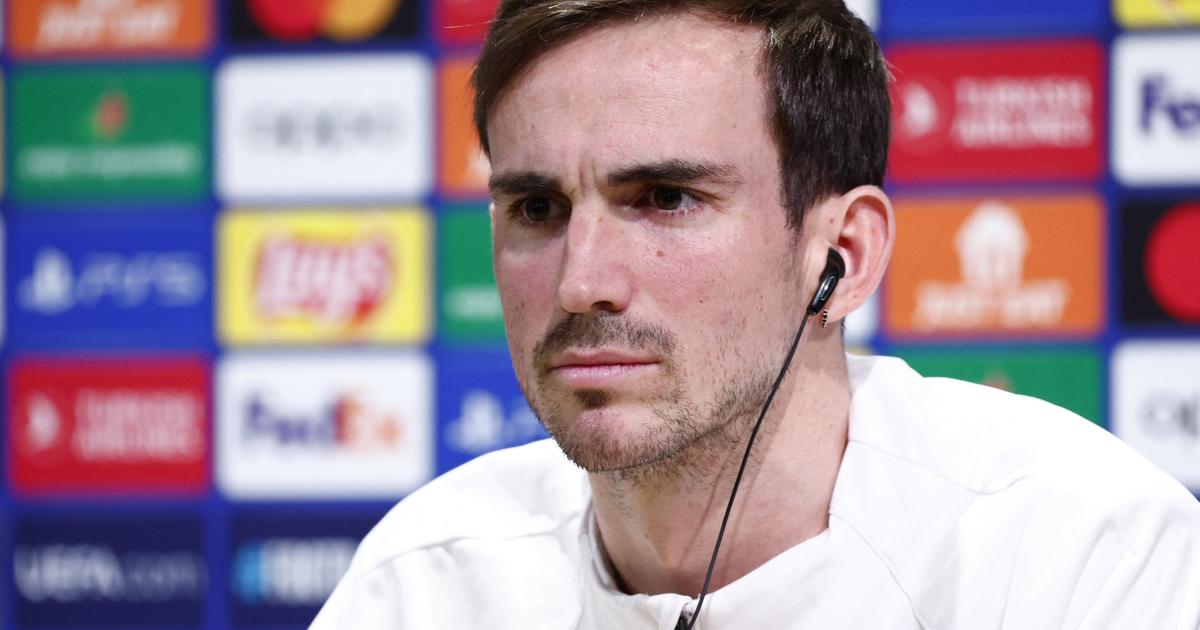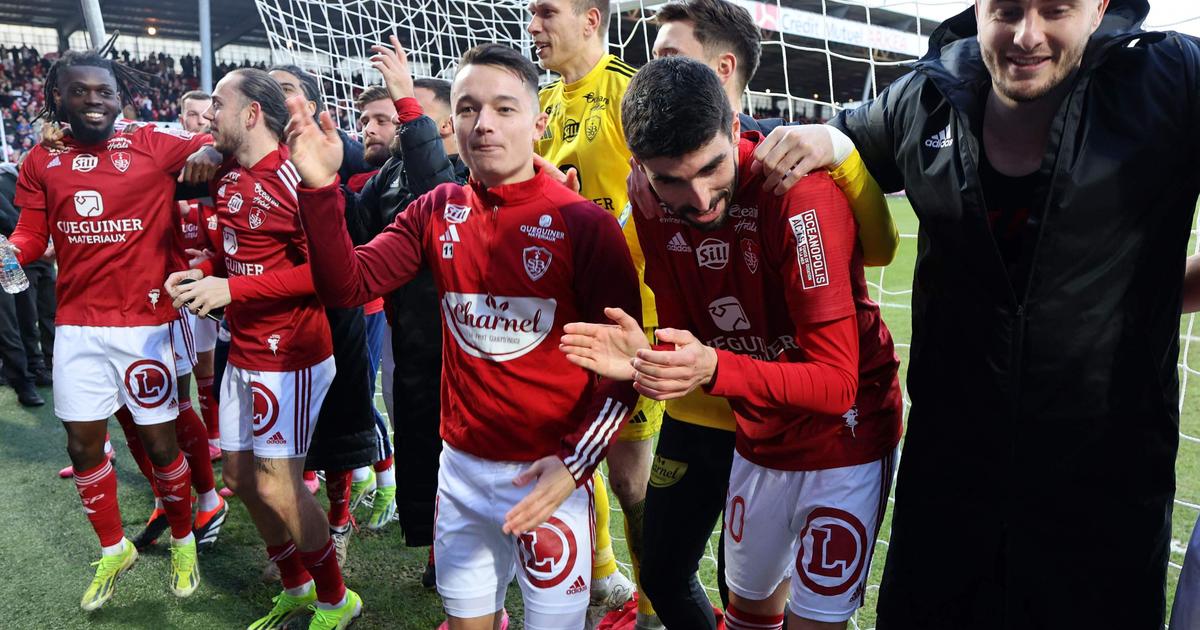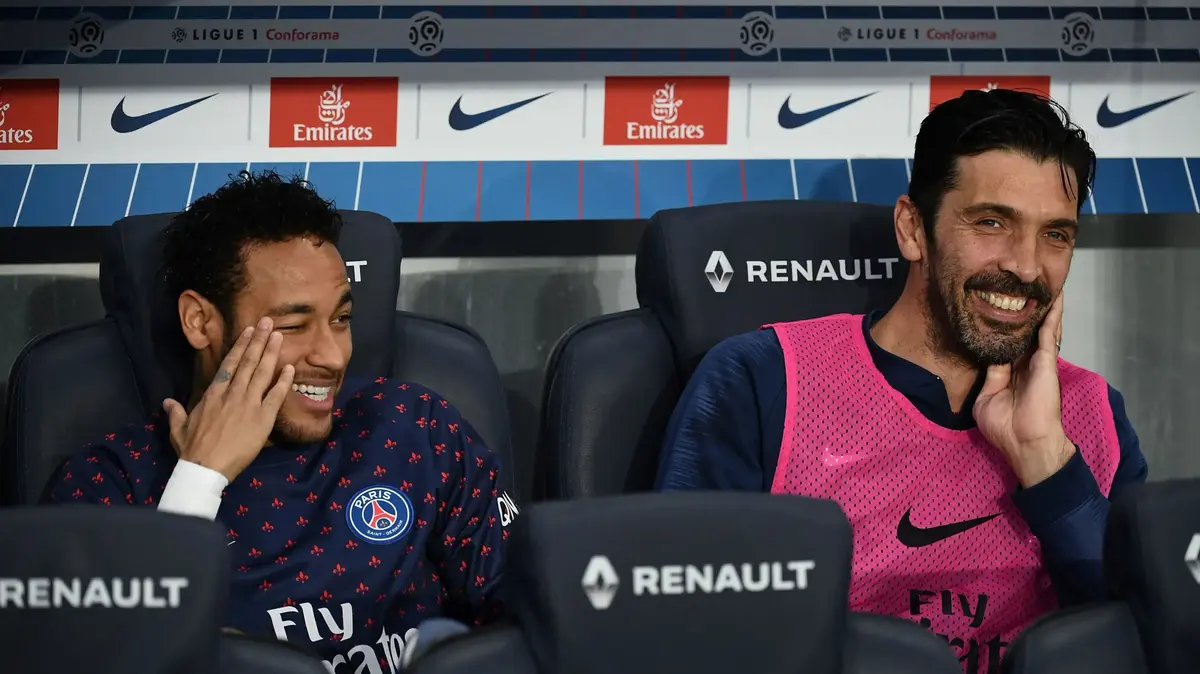FC Bayern France: Kingsley Coman (back left), front Benjamin Pavard, Corentin Tolisso, Lucas Hernández (far right)
Photo: Anke Waelischmiller / imago images / Sven SimonTen French footballers started the two semi-finals of the Champions League. Almost every fourth of the 44 professionals was born in the country of the world champion. Actually, that's not a surprisingly high number, as Olympique Lyon and Paris Saint-Germain were represented in the semifinals.
However, the number of French professionals in this round represents a development.
Clubs all over Europe rely on French footballers. The other two semi-finalists, FC Bayern and Leipzig, also played with French; seven of the eight quarter-finalists had at least one French in the squad. Of the 737 professionals registered for the Champions League group stage, 65 came from France - the top figure. There are young talents who are capable of development, but also seasoned national players. They shape European football.
Many of the stars of today and tomorrow come from the Paris area, the banlieues, the suburbs of the French capital. The areas are often "cold and desolate", but the football of the young players is "overwhelmingly good", according to a SPIEGEL article in 2018. When asked why so many French footballers come from here, said Paul Pogba from Manchester United once: "Because there is only football here. Whether at school or out in the neighborhood, everyone will play football. Every day there is a ball, it helps us not to do stupid things. It is all there is . "
Talent pool Paris
The talent pool in Paris was not created by chance. France is an immigrant state - and because of its centralism there are many jobs only in the capital, many people are drawn here, families. Paris is growing - and so is the importance of sport. In France's 1984 European Championship selection, there was no player from the greater Paris area, in 1998 there were three, in today's squad over a third comes from Paris and the surrounding area.
A lot has to do with Clairefontaine, which was founded in 1988, 50 kilometers from Paris. Here, France trains its stars in a high-performance center - many other countries once orientated themselves towards this facility.
Face of sport promotion: Presnel Kimpembe from PSG
Photo: POOL / REUTERSOne of the people who made it from the Paris belt to the PSG first team and the national team is Presnel Kimpembe. He left home at the age of twelve. "Then there was really only training and school for me. I hardly had a social environment outside of football," said the 25-year-old once. If you want to make it onto the big stage, you have to go through here. Hardly any parties, the sport counts. The competition was enormous.
In the meantime, Kimpembe has won five championship titles with his club and has played for the national team nine times. His success story is also that of the French youth system. There are also academies and viewing tournaments in Germany, and German football also produces talent year after year. But in France, where big cities play a special role, where you can see more closely, hardly any talent seems to go undiscovered.
The final round of the Champions League shows how the system works. With Kimpembe and Kylian Mbappé, two French, PSG went into their semi-finals against Leipzig. There were five at Lyon and three at RB. At Bayern there were three against Lyon from the second half: With Benjamin Pavard, Corentin Tolisso and Kingsley Coman, French players also slipped into the team for the fourth semi-finalist. Lucas Hernández and Mickaël Cuisance stayed on the bench. The sixth, Tanguy Nianzou Kouassi, who came from PSG on a free transfer this summer, is not yet eligible to play for Munich in the premier class.
Qatar's influence on PSG
You are not exaggerating when you attribute a defining role to French football. The country was runner-up in 2016 and won the World Cup two years later. According to the transfermarkt.de portal, the 21-year-old Mbappé has the highest market value in the world today, at 180 million euros. His commitment was worth a transfer fee of 145 million euros to the Parisian investors from Qatar; Mbappé, born in Paris but trained in Monaco, was a key transfer on the way to the first Champions League final in club history, which PSG will contest against FC Bayern on Sunday (9 p.m., live ticker SPIEGEL.de; TV: ZDF).
The Qatari investors have been pumping their money into the Paris club for nine years now, and they have since invested 1.3 billion euros in new players. At the same time, the youth work was professionalized. On the other hand, there are 444 million euros in income from player sales, 120.5 million euros brought in talents from their own offspring. Recently, the income from this area has risen significantly: In the previous summer of transfers, the club received 60 million in transfers for former youth players. In the first two Qatar years, the income here was still zero.
Sifting through talents, training them, selling them - PSG is flushing young players into football, and thanks to them has become (a little bit) less dependent on money from Qatar. It is rare for the talents to stay and be built into the first team. Investors wanted quick success, quick attention - transfers like the one from Neymar or Thiago Silva helped. But not young players that nobody knows. Only Kimpembe has made it into the first team on a sustainable basis.
The Bundesliga wants to cash in
But as lucrative as the Parisians' youngster model seems, it is not always a guarantee of income - at least not only for PSG. With the 18-year-old Kouassi, the Paris club lost one of the greatest defensive talents this summer. Paris' sports director Leonardo recently criticized that "German clubs are attacking young players". The competition also wants to benefit from France.
Up to now, the hunt for top French talent has been a Leipzig specialty: Dayot Upamecano, Ibrahima Konaté, Nordi Mukiele, Christopher Nkunku. All four were trained in the Paris area, Nkunku at PSG. The four RB stars once cost the club just under 40 million euros in transfer, around 30 million went to France, Upamecano came from Salzburg to the sister club in Leipzig. Today they are worth a small fortune, their market value is almost 150 million euros.
Lost 3-0, but still a winner: Leipzig's Upamecano (here against PSG star Neymar) is the future
Photo: David Ramos / APFrench talents are often excellently trained. That's why you can make a lot of money with them. When asked about the Leonardo criticism, BVB sports director Michael Zorc said that the players would like to come to Germany. The word got around that you would be playing at the top level early on in the Bundesliga.
Upamecano, 21, and Bayern's entry Kouassi, 18, represent a further development: especially in the center-back position, France produces a number of players. Real Madrid's Raphaël Varane, 27, and Samuel Umtiti, 26, from FC Barcelona are already part of the older generation, they formed the world championship central defense in 2018. Upamecano and Kouassi are the new generation. In between there is: Kimpembe or Hernández. Why it is like that? There is no good explanation, say French football experts. They say: You would find so many highly talented French footballers in many positions, France dominates European football.
Aymeric Laporte makes it clear how absurdly high the level of the central defender is. The 26-year-old is one of Manchester City's top stars, his market value is 60 million euros. The number of his internationals for France is: zero.
Icon: The mirror



/cloudfront-eu-central-1.images.arcpublishing.com/prisa/AOBMHOXPJJDWVDCPFI74HQWVNE)




